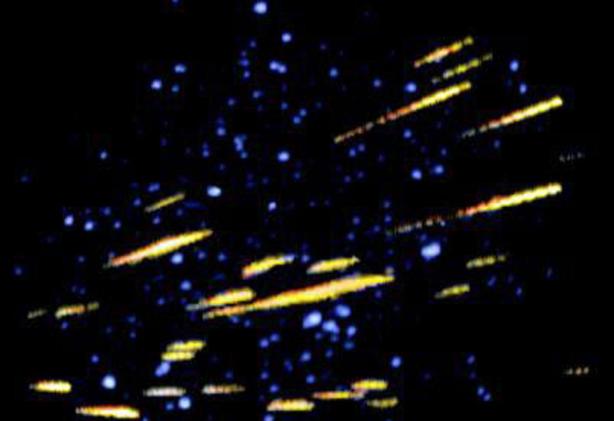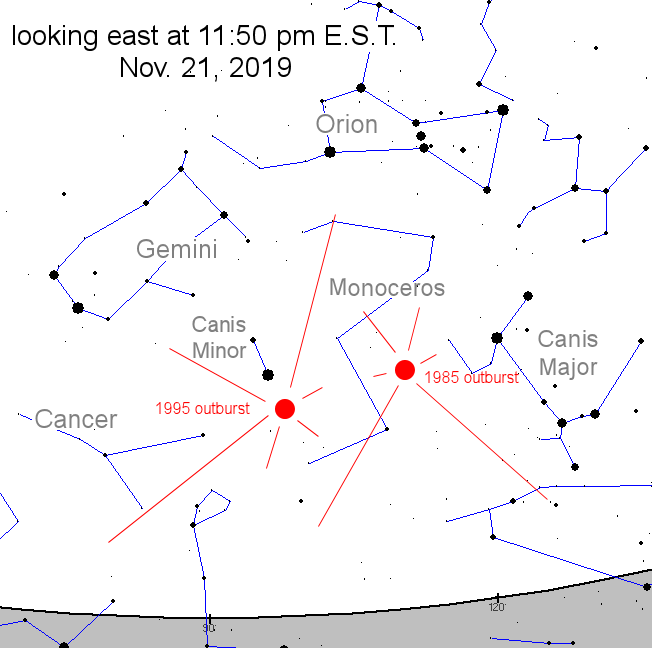Nov. 20, 2019: Get ready for a meteor outburst–maybe. On Nov. 21-22, Earth will pass by a stream of dusty debris from an unknown comet. Forecasters Esko Lyytinen (Finnish Fireball Network) and Peter Jenniskens (NASA/Ames) believe this could cause an outburst of alpha Monocerotid meteors. Jenniskens witnessed a previous outburst in 1995:

“This is a composite of alpha Monocerotids detected in low-light video observations by Sirko Molau in Germany during the 1995 outburst,” says Jenniskens. “Most of the meteors ranged in magnitude from +2 to +0.”
No one knows exactly where alpha Monocerotid meteors come from. The parent comet has never been seen. Based on the dynamics of its debris, it probably circles the sun every 500 years or so. We know the comet exists only because of the narrow trail of dust it left behind long ago. Earth has run into the dust trail at least 4 times, causing bright outbursts of meteors in 1925, 1935, 1985 and 1995.
Lyytinen and Jenniskens recently realized that in 2019 Earth would pass about as close to the debris as it did in 1995–and so they issued this alert. The outburst is expected around 04:50 UT on Nov. 22nd (11:50 p.m. EST on Nov. 21st). Because the debris zone is narrow (only ~50,000 km wide), the outburst could last as little as 15 minutes and probably no more than 40 minutes, producing dozens of meteors during that short time.

People in western Europe may have the best view shortly before sunrise on Nov. 22nd. For them, the shower’s radiant in Monoceros (the Unicorn) will be relatively high in the southern sky. Sky watchers in eastern parts of North America can see the show, too, but not as well. As shown in the sky map, above, Monoceros will still be hugging the eastern horizon when the shower peaks over the east coast of Canada and the USA. West coast observers won’t be able to see Monoceros at all.
There’s no guarantee that anything will happen. Only a handful of alpha Monocerotid outbursts have been observed in the past century, which means researchers are still mapping the debris zone. Earth could hit a extra-dense spot, resulting in an amazing display, or pass through a void, producing nothing.
“We are crossing the dust trail along a different cord than in past returns and this will help understand how the dust is distributed perpendicular to the Earth’s path,” says Jenniskens. “Whatever happens, we are going to learn something.”
Realtime Spaceweather Photo Gallery
Free: Spaceweather.com Newsletter
Watching the live broadcast from the Tenerife observatory, there definitely has been some activity well above the usual 4 meteors per hour. I’d say a rate of around 45 per hour was probably reached with a maximum around 5.15 UT
LikeLike